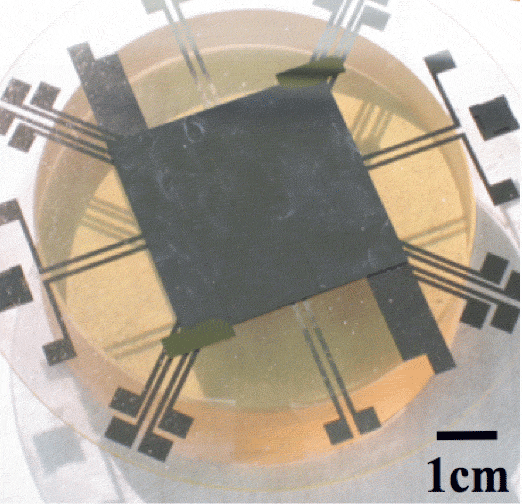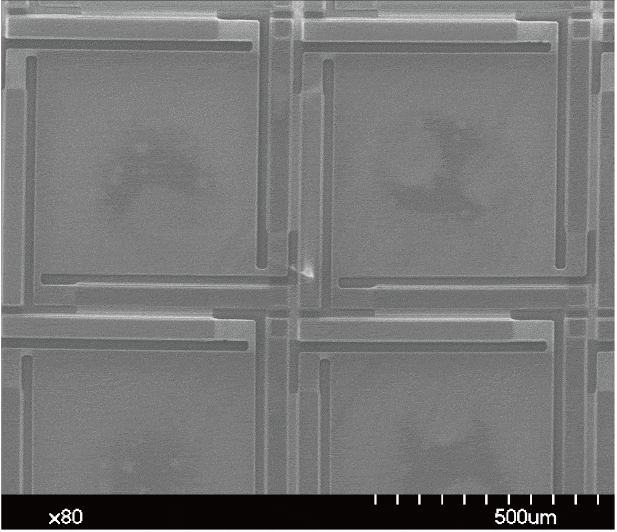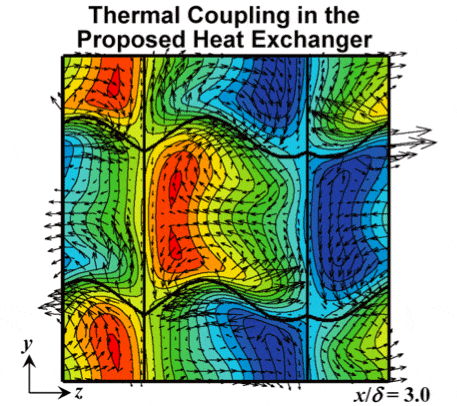Optimum Design and Control of Micro Heat and Fluid Flow
C. Yeh, A. Zhao, H. Kinoshita, S. Oh, H. Nakajima, Y. Goto, R. Tachibana, S. Jin, K. Morimoto, and Y. Suzuki
Overview
The target of the present study is to develop an optimal design/control method of micro heat and fluid flow and to demonstrate in a prototype microfabricated with MEMS technologies.
First example is optimal control for transient temperature profile inside electronic devices such as pulsed laser diode based on the adjoint equation of one-dimensional heat conduction. Joule heating with a thin-film heater is employed as the control input in order to minimize temperature changes of a thin active layer embedded in a modeled laser diode. In numerical simulations assuming the light-emitting time period of 1 us, temperature variation of the active layer is successfully suppressed by 80% with the heat input prior to the onset of the laser pulse. It is found that the Fourier number of the layer between the control heater and the active layer is the key parameter to minimize the temperature fluctuations. We also successfully demonstrate suppression of the temperature change in a MEMS-based macroscale model of the laser diode.
Second example is active control of thermal radiation for space applications. Radiation control is crucial to maintain the operation temperature of satellites under varying irradiation of sunlight. Bulky heat exchangers with heat pipe or thermal louvers/shutters with a low fill factor previously proposed are not suitable for next-generation small satellites. In the present study, we propose an array of electrostatically-driven MEMS diaphragms for active control of thermal radiation using the near-field effect. In between Au and Cu surfaces at 300K, simulated effective emittance drastically increases when the gap is smaller than 0.4 um. Based on thermal resistance analysis of various thermal passes, the effective thermal resistance is reduced by four times when the diaphragm is snapped down on to the substrate. We employ parylene, which a MEMS-friendly polymer proved to work in space missions, as the structural material of the radiator. We have designed and successfully microfabricated a prototype of the MEMS radiator using surface micromachining.
Third example is optimal design of heat exchangers, which is required for high-efficiency system with lower environmental burden. Conventional heat augmentation methods are roughly grouped into four categories: 1) leading-edge effect through successive interruption of the thermal boundary layers, 2) vortex generator for offering streamwise vortical motions, 3) surface roughness for flow separation and reattachment, and 4) modification of primary heat transfer surfaces for inducing secondary flow. Among them, the former three are mainly effective for turbulent flows at the cost of relatively large pressure loss.
In the present study, we propose counter-flow heat exchangers with oblique wavy walls and demonstrate in a series of numerical simulations that significant heat transfer enhancement has been achieved at the cost of relatively-small pressure loss. When thermal coupling of hot and cold fluid passages is considered, the total heat transfer surface area required for a given pumping power and heat transfer rate can be reduced by more than 60% if compared to the straight square duct.
An adjoint-based shape optimization method of laminar heat exchangers, which takes into account the heat transfer performance with the pressure loss penalty, has been also proposed. When applied to a modelled heat-exchanger passage with a pair of oblique wavy walls, the present optimization method can successfully refine the duct shape. The j/f factor is further increased by 4% from the best value of the initial oblique wavy duct.

Transient temperature control of pulsed laser diode using thin-film control heater

High-speed transient temperature control using adjoint-equation-based optimum control scheme (Ito and Suzuki, 2011)

MEMS-based space raditor using near-field effect (Ueno and Suzuki, 2011)

Optimal shape design of laminar heat exchanger with oblique wavy walls (Morimoto et al., 2010)
Recent Reports
Optimal Control of High-Speed Transient Temperature Profile in Modelled Semiconductor Device
- Morimoto, K., and Suzuki, Y.,
“Adjoint-Based Optimum Thermal Control of Laser Diodes,”
15th Int. Heat Transfer Conf., Kyoto, (2014). - Kim, M., Ito, S., Morimoto, K., and Suzuki, Y.,
“Optimum Temperature Control of Micro Devices Under High-speed Thermal Disturbances,”
25th IEEE Int. Conf. Micro Electro Mechanical Systems (MEMS’12), Paris, pp. 1085-1088, (2012). - Ito, S., and Suzuki, Y.,
"High-speed Transient Temperature Profile Control Using Adjoint-based Optimal Control Scheme,"
ASME/JSME 8th Thermal Engineering Joint Conference, Honolulu, AJTEC2011-44574, 4pp (2011).
Electrostatically-driven MEMS Space Radiator
- Ueno, A., and Suzuki, Y.,
“Parylene-based Active MEMS Space Radiator with Thermal Contact Switch,”
Appl. Phys. Lett., Vol. 104, 093511, (2014).
(doi:10.1063/1.4867699) - Ueno, A., and Suzuki, Y.,
“Near-field-effect-enhanced Micro Radiator Array for Active Control of Thermal Radiation,”
Int. Workshop Nano-Micro Thermal Radiation (NanoRad 2012), Matsushima bay area, pp. 72-75, (2012). - Ueno, A., and Suzuki, Y.,
“Electrostatially-driven Active Space Radiator Using Near-field Thermal Radiation,”
Proc. 16th Int. Conf. Solid-state Sensors, Actuators, and Microsystems (Transducers ’11), Beijing, pp. 2654-2657 (2011). - Ueno, A., and Suzuki, Y.,
“MEMS-based Active Control of Thermal Radiation Using the Near-field Effect,”
Int. Conf. Environ. Syst. (ICES), AIAA 2011-5256, Portland, 8pp (2011).
Optimal Design of Laminar Heat Exchanger
- Morimoto, K., Suzuki, Y., and Kasagi, N.,
"Optimal Shape Design of Compact Heat Exchangers Based on Adjoint Analysis of Momentum and Heat Transfer,"
J. Therm. Sci. Tech., Vol. 5, No. 1, pp.24-35 (2010).
(doi:10.1299/jtst.5.24)
- Morimoto, K., Suzuki, Y., and Kasagi, N.,
"High Performance Recuperator With Oblique Wavy Walls,"
Trans. ASME: J. Heat Transfer, Vol. 130, Issue 10, No. 101801, 10pp (2008).
(doi:10.1299/jtst.5.24)
Last update: 2016-11-11